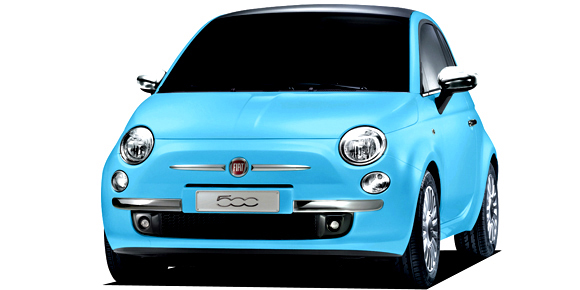What's nostalgia?
"An emotional state in which an individual yearns for an idealized or sanitized version of an earlier time period"
[Stern, 1992]
"A sentimental or bittersweet yearning for an experience, product or service from the past"
[Baker and Kennedy, 1994]
From a marketing point of view:
“A preference (general liking, positive attitude or favorable affect) towards objects (people, places or things) that were more common (popular, fashionable or widely circulated) when one was younger (in early adulthood, in adolescence, in childhood or even before birth)".
[Holbrook and Schindler 1991]As a theme in promotions, nostalgia can be distinguished between two separate but related forms: historical and personal.
 The personal theme depicts a time in one's own past, the time frame is one's own lifetime and familiarity is the rule in treating time and space, as opposed to the exoticism of historical nostalgia.
The personal theme depicts a time in one's own past, the time frame is one's own lifetime and familiarity is the rule in treating time and space, as opposed to the exoticism of historical nostalgia. In Historical nostalgia the past is defined as a time before the audience was born;
Exotic settings, idealized carachters and mythic-status heroes.
As fashion is getting more and more inspired by the 60s and the 70s, the Italian automotive companies FIAT and Piaggio revitalized their brands launching new versions of the historic utility car 500 and legendary scooter Vespa.
They rely on historical nostalgia to appeal 18-30 customers and secondly on personal nostalgia in order to attract baby boomers.
FIAT 500
The Fiat 500 is a car produced between 1957 and 1975. Launched in July 1957 it was marketed as a cheap and practical town car.
Despite its diminutive size, the 500 proved to be an enormously popular vehicle throughout Europe due to the exceptional economic growth during the 60s.
This car features a distinctive retro-look just like the Volkswagen New Beetle and BMW MINI.
Marketers took up an kind of "celebrity endorsement" based on mythical fictional characters of the old 500 period.
Arsène Lupin III is the fictional World's number 1 thief created by Monkey Punch in 1967. He often drives a 1957 yellow 500.
 |
| Lupin III - The Castle of Cagliostro, animated film, Japan 1977 |
The 2007 Japanese anime film "Lupin III - Green vs Red" celebrates the 40th anniversary of the Lupin III series of movies, which began in 1979. In this new movie, Lupin drives a brand new 2007 Nuova 500.
Fiat marketers also placed the New 500 in the worldwide famous comic series "Diabolik".
Diabolik, created in 1962 by the Giussani sisters, is an extremely smart and skilled master thief. The series was greatly succesful during the 60s and the 70s and the main character gained a legendary-status in Italian popular culture.
In 2008 FIAT celebrated this collaboration with the limited edition 500 Diabolika.

With this marketing strategy FIAT wants to create a bond with symbols of an idealized past and at the same time convey a message of freshness, deftness and smartness related to these dynamic characters.
 |
| Presentation of Fiat 500 in Piazza dei Signori in Vicenza. On this occasion the new Fiat 500s were covered with a cloth resembling the old Fiat 500. Click on the image sto start the frames sequence |
VESPA
 |
| Sting as "Ace Face" on a Vespa GS in the 1973 cult motion picture "Quadrophenia" |
Launched in 1946 Vespa has become a design icon and a symbol for sub-cultures such as the English Mods.
After a sales slump during the 90s, Piaggio launched the new Vespa LX in 2006.
Like the FIAT 500, the new Vespa maintains the style of the historic Vespas combined to modern technology.
Piaggio Marketers decided to create a bond with the past and trigger a nostalgia effect capitalizing on the classy image of Audrey Hepburn.
In the most famous scene of the 1953 cult movie "Roman Holiday" the style icon actress and his fictional lover Gregory Peck ride a Vespa v31t on the streets of central Rome.
The film, directed by Eddie Albert, made Vespa a worlwide known icon.
...Along with pictures of young and good looking young people of today.
The comparison and the connection between old times romance and today youth give Vespa a fresh but sophisticated image: the modern technology succesfully meets a classy dream past.
What's the result?
Both FIAT and Piaggio increased their sales in the second half of first decade of the new century.
FIAT sold more than 500.000 new 500s since 2008 in 83 countries in the world, 58.000 just in the UK.
See you soon space travellers
and remember:
The Guide is definitive. Reality is frequently inaccurate. ;-)Sources
> Stern, B.B. (1992) Nostalgia in Advertising Text: Romancing the Past. Advances in Consumer Research. 19, pp.388-89.
> Baker, S. M., and Kennedy, P. F. (1994) Death by Nostalgia: A Diagnosis of Context-specific Cases. Advances in Consumer Research. 21, pp. 169-174.
> Holbrook, M.B. and R.M. Schindler (1991) Echoes of the Dear Departed Past: Some Work in Progress on Nostalgia. Journal of Consumer Research. 18, pp. 330-333.
>The Telegraph: The Eternal Vespa
http://www.telegraph.co.uk/motoring/scooters/piaggio/2734607/The-eternal-Vespa.html
> Fiat.co.uk: Fiat 500 Breaks Into UK Top 10 Sales Figures
http://www.fiat.co.uk/Content/Article.aspx?id=20279










Really interesting read and looks beautiful. It is evident you have done a lot of research for this. However you must try to paraphrase it. Too much is taken from the original source here. Paraphrase or reference properly.
ReplyDeleteLooks wonderful!